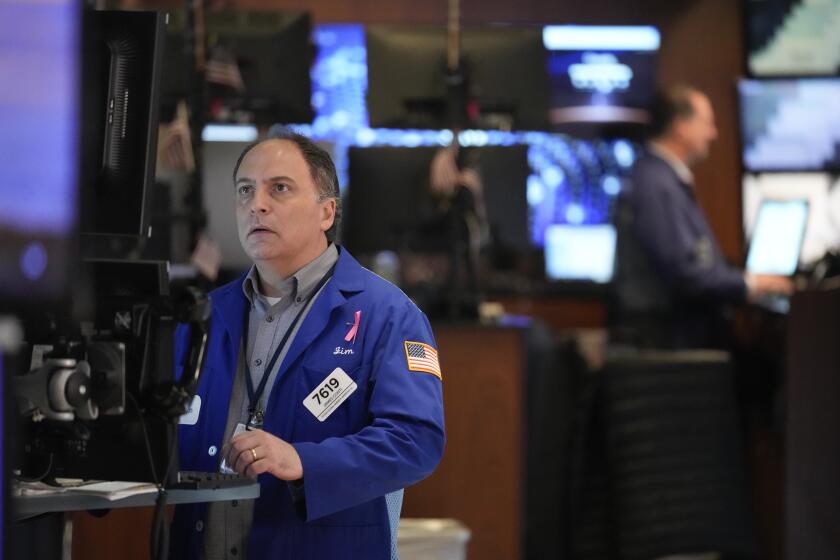Obama will need eager bond buyers
As a measure of the Obama administration’s success or failure in the next year, a stock market recovery would be a positive. So would an uptick in the housing market.
But the new president may need the cooperation of bond investors most of all.
The U.S. Treasury is on track to issue as much as $2 trillion in new bills, notes and bonds in fiscal 2009 -- an unprecedented level of borrowing even for a country that’s used to ginormous government debt numbers.
The money will go to pay for the financial system bailout, expected new economic stimulus programs and normal deficit spending, including for the war efforts in Iraq and Afghanistan.
Before anyone launches into a tirade against Barack Obama, keep in mind that the Treasury’s projected borrowing needs are largely the legacy of the current administration and Congress.
In any case, the upshot is that Uncle Sam will need investors worldwide standing ready to buy the coming deluge of IOUs.
With the U.S. public debt already at a record $10.58 trillion -- including $4.26 trillion held by government trust funds such as Social Security -- the prospect of adding to that mountain no doubt chills many Americans.
John Whitehead, a former Goldman Sachs Group chairman and Reagan administration deputy secretary of State, worried out loud this week that the latest federal borrowing binge will hasten the day that U.S. debt no longer is considered gilt-edged.
“Before I go to sleep at night, I wonder if tomorrow is the day Moody’s and S&P; will announce a downgrade of U.S. government bonds,” Whitehead, 86, said at the Reuters Global Finance Summit in New York. “Eventually U.S. government bonds would no longer be the triple-A credit that they’ve always been.”
Eventually, maybe. But there’s no indication that the bond-rating firms are ready to take that AAA grade away any time soon.
And while the Treasury’s borrowing plans are mammoth, they also are the logical response to the current frightening state of the global economy.
This is classic Keynesian economic policy at work: The government has to step in with money because there is no other entity able to handle a challenge of this magnitude.
Much of the economic data over the last few weeks suggest that consumer and business spending fell off a cliff in October, here and abroad.
On Friday, the government said U.S. retail sales slid 2.8% in October, the largest drop on record.
The lesson of the early 1930s was that government inaction in the face of a collapsing economy was a recipe for catastrophe -- the Great Depression.
What’s more, the usual argument against excessive federal borrowing and spending is that the government will crowd out private-sector borrowers.
But at this point there’s no one to crowd out, either because businesses, consumers, investors and other credit users are reducing debt by choice, or because wounded lenders are unwilling to extend credit to all but the highest-quality borrowers. (That’s your credit crunch.)
So the government is, for the time being, taking the place of other borrowers who would be in the market if the economy and banking system were functioning normally.
And despite Whitehead’s concerns, there are few signs that investors’ appetite for U.S. debt securities overall is diminishing.
In fact, the panic that has gripped the global financial system in recent months has become the Treasury’s ally: Its IOUs are pretty much the only paper that many investors are willing to buy, because they trust that they’ll be repaid.
“In the short run, Treasuries are king,” said Ray Remy, head of fixed income at Daiwa Securities in New York.
This week, for example, yields on Treasury issues declined across the board even as the government issued a total of $55 billion in new three-year, 10-year and 30-year securities, the largest such borrowing wave since early 2004.
Even though they know there is much more Treasury debt coming to market over the next year, investors were ravenous for the three-year notes the government sold on Monday. Heavy demand allowed the Treasury to issue the notes at an annualized yield of just 1.8%.
The 10-year notes, sold on Wednesday, also were well-received at a yield of 3.78%.
But the market hiccuped at the 30-year bonds sold on Thursday. The yield on those securities was 4.31%, significantly higher than the 4.21% yield analysts had expected.
That points up the risk for the Obama administration: It probably will be a question not of whether the Treasury can borrow what it wants, but what price it will have to pay in interest costs.
If bond investors, for whatever reason, demand sharply higher yields on Treasury securities, that could drive up interest rates on other debt such as mortgages, dealing a new blow to the housing market and to Wall Street.
Why would investors insist on higher yields? The biggest reason would be that they feared rising inflation in the next few years. Inflation erodes fixed-rate bond yields. Would you want a bond paying 4.31% if you thought inflation would jump to, say, 6%?
So there’s the challenge for the Obama administration, in a nutshell: Bond investors worldwide will have to be convinced that the U.S. is borrowing responsibly, given the economic situation; that a major inflationary fire isn’t on the horizon; and that, eventually, America will get its budget under control again.
The president-elect didn’t get us into this debt situation, but he’s the one who’ll have to get us through it.
--






